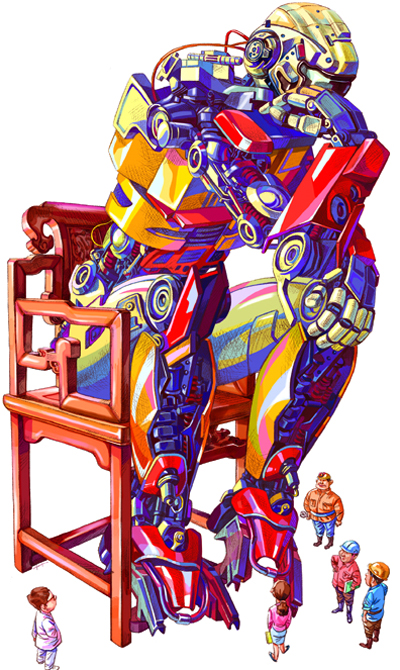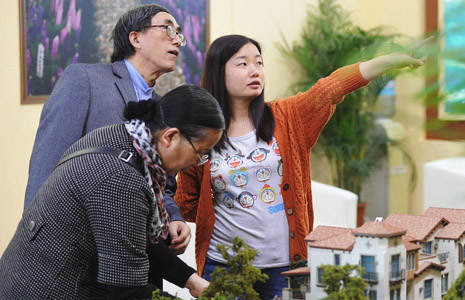Transformers of industrial landscape
Updated: 2014-08-11 07:35
By CHEN YINGQUN (China Daily)
|
|||||||||||
|
 |
|
LI MIN/CHINA DAILY |
A worker sits making pullovers, while another thread her sewing machine. What is special about this relationship is that one of them doesn't talk, eat, drink or even get paid.
"In the past, robots worked separately from humans, but now they can work together," said Arturo Baroncelli, president of the International Federation of Robotics, as he described the scene at the recent China International Robot Show in Shanghai.
"In future, there will be more interaction, more robots and humans working together."
For 30 years, businesses worldwide have flocked to China, attracted by its cheap labor.
But now, as its human labor force has begun to price itself out of the market, a new brigade of workers is being recruited to entice companies to the country: robots.
Not only will the shift have profound ramifications for the makeup of the workforce, Baroncelli says, but it has already turned the country into the world's biggest robotics market.
"What happens here will shape the future of the world robot industry as a whole," he says.
Nearly 180,000 industrial robots were sold worldwide last year, a 12 percent increase over the previous year.
A fifth of those were installed in China, the federation revealed at its annual meeting during the show.
With sales of about 37,000 industrial robots last year, China surpassed Japan's 26,000 sales for the first time, to become the world's biggest and fastest-growing market.
During the year, most Western robot markets grew by less than 10 percent, but China's total supply of industrial robots has now grown 36 percent annually on average over the past five years, says Li Xiaojia, a researcher at the China Robot Industry Alliance.
The alliance brings together 100 enterprises, manufacturers, universities and research institutes, as well as government-sponsored organizations involved in Chinese robotics research and development, manufacturing and services industries.
Over the next decade, Li expects the Chinese market to grow about 40 percent a year.
While Western countries started developing and using robots in the 1960s, China was a latecomer, but has caught up fast, meaning more overseas firms are anxious to establish a presence in the country.
Comau Group of Italy, for instance, a leader in automatic and flexible manufacturing systems, says it plans to transfer its robot production from Turin to Shanghai this year to be closer to customers.
|
 |
 |
Today's Top News
Thailand waives visa fees for Chinese tourists
Sino-Japanese ties at a '40-year low'
Yingluck returns to Thailand
Turkish PM wins direct presidential election
Anti-graft targets Chinese emigrants
US 'fully supports' Iraqi president
First lady attends opening of camp for AIDS orphans
China now top robot market
Hot Topics
Lunar probe , China growth forecasts, Emission rules get tougher, China seen through 'colored lens', International board,
Editor's Picks

|

|

|

|

|

|





